Concrete may not be the obvious choice when it comes to playing pickleball, but don’t let that stop you from discovering the hidden potential of this seemingly unforgiving surface. While grass and outdoor courts may steal the limelight, the art of mastering pickleball on concrete can be both an electrifying challenge and a playground for innovation. So, can you play pickleball on concrete? The resounding answer is an enthusiastic yes! This definitive guide will delve deep into the intricacies of this unorthodox playing field, uncovering the tips, tricks, and tactics that will turn your concrete court conquests into a riveting adventure. Get ready to paddle up, brace yourself, and let the adrenaline of concrete pickleball course through your veins.
The right courts for playing pickleball
Pickleball is a very popular sport that combines elements of tennis, badminton, and ping-pong. It has gained a lot of popularity in recent years due to its easy-to-learn rules, accessibility for all ages and skill levels, and the fun and friendly atmosphere that surrounds it.
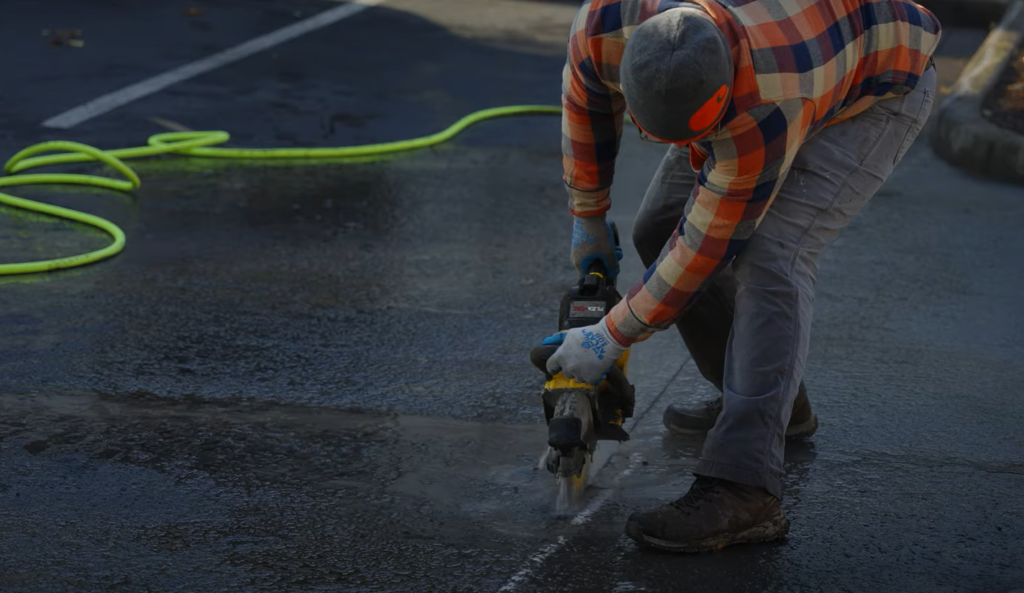
One of the great things about pickleball is that it can be played on a variety of surfaces, including indoor courts, outdoor courts, and even makeshift courts in driveways or backyards. However, not all courts are created equal when it comes to playing pickleball. Here are some things to consider when looking for the right court to play pickleball on:
Surface type
The type of surface is one of the most important factors in choosing the right court for pickleball. The ideal surface for playing pickleball is a hard, smooth surface with minimal cracks or bumps. This allows for a consistent bounce of the ball and prevents any tripping hazards that could lead to injuries.
Concrete and asphalt are two common types of surfaces used for outdoor pickleball courts. They both provide a good amount of traction and allow players to move quickly and make sharp turns. However, concrete can be quite hard on the joints, so players may want to consider wearing proper footwear or placing foam padding under their feet.
Indoor courts typically have a rubber or wood surface which offers more shock absorption and is gentler on the body. This can be especially beneficial for older players or those with joint pain. However, these surfaces may require more maintenance compared to outdoor courts.
Court size
Pickleball can be played on a variety of court sizes, but the standard size is 20 by 44 feet for both singles and doubles play. It’s important to choose a court that meets these dimensions as it allows for proper gameplay and strategy.
A court that is too small can limit movement and make it difficult for players to cover the entire court, resulting in missed shots and compromised gameplay. On the other hand, a court that is too large can make it harder to keep up with the fast-paced nature of the game, requiring players to exert more energy and potentially affecting their performance.
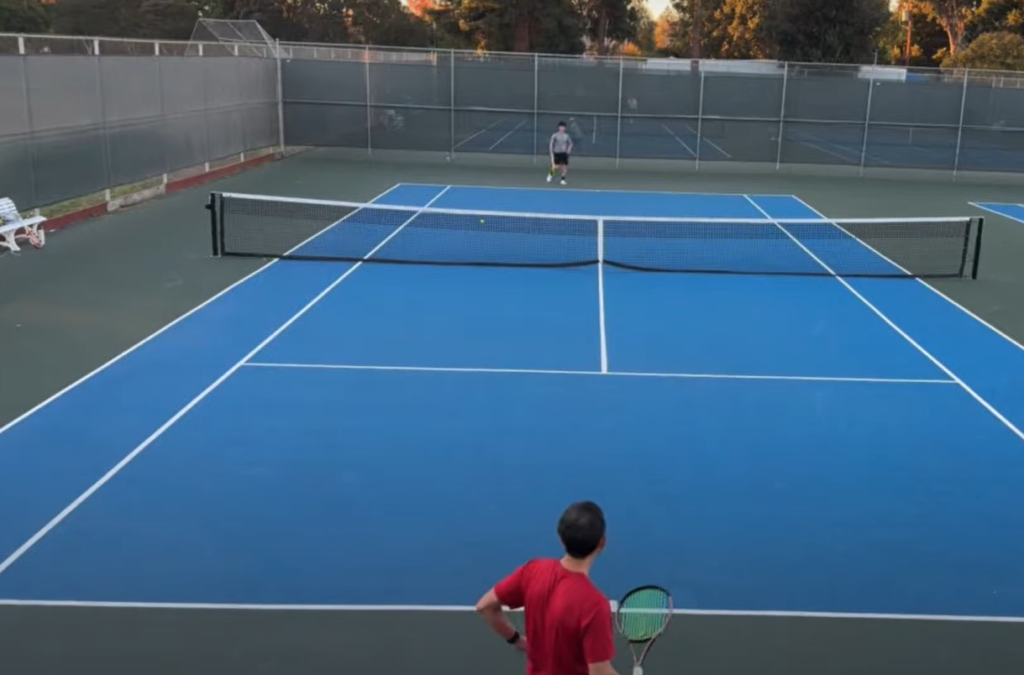
By playing on a standard-sized court, players can fully engage in the game, utilizing their skills and strategies to their advantage. This optimal court size ensures a balanced playing field, allowing players to showcase their agility, reflexes, and shot-making abilities while enjoying the game to its fullest.
Net height
When selecting a pickleball court, the net height is a crucial consideration.
This optimal height ensures that players can effortlessly hit the ball over the net while preventing it from bouncing too high and negatively impacting gameplay. By maintaining this ideal net height, the game remains fair, competitive, and enjoyable for all participants.Lighting
For those who enjoy playing pickleball at night, having proper lighting on the court is essential. This allows for better visibility of the ball and ensures safety while playing. Ideally, courts should have evenly distributed lighting that is bright enough to see the ball but not so bright that it causes glare.
Court lines
Proper court lines are necessary for players to be able to accurately determine if the ball is in or out of bounds. The standard pickleball court has a centerline, baseline, sidelines, and non-volley zone line (also known as the “kitchen”). These lines should be clearly marked and easily visible to all players.
When looking for the right court to play pickleball on, it’s important to consider these factors and choose a court that meets these requirements. This will not only enhance gameplay but also ensure a safe and enjoyable experience for all players. With the increasing popularity of pickleball, more courts are being built specifically for this sport, making it easier for players to find the perfect court to play on. So grab your paddle and some friends, and head out to a pickleball court near you [1]!
Can Pickleball Be Played On Concrete?
Why Is Raw Concrete Not A Suitable Flooring Option For Pickleball Courts?
Pickleball is a popular sport that combines elements of tennis, badminton, and table tennis. It has gained widespread popularity in recent years due to its accessibility and ease of play for people of all ages and skill levels.
When it comes to playing pickleball, one important factor to consider is the type of surface you will be playing on. While many different surfaces can be used for pickleball courts, raw concrete is not a suitable option for several reasons.
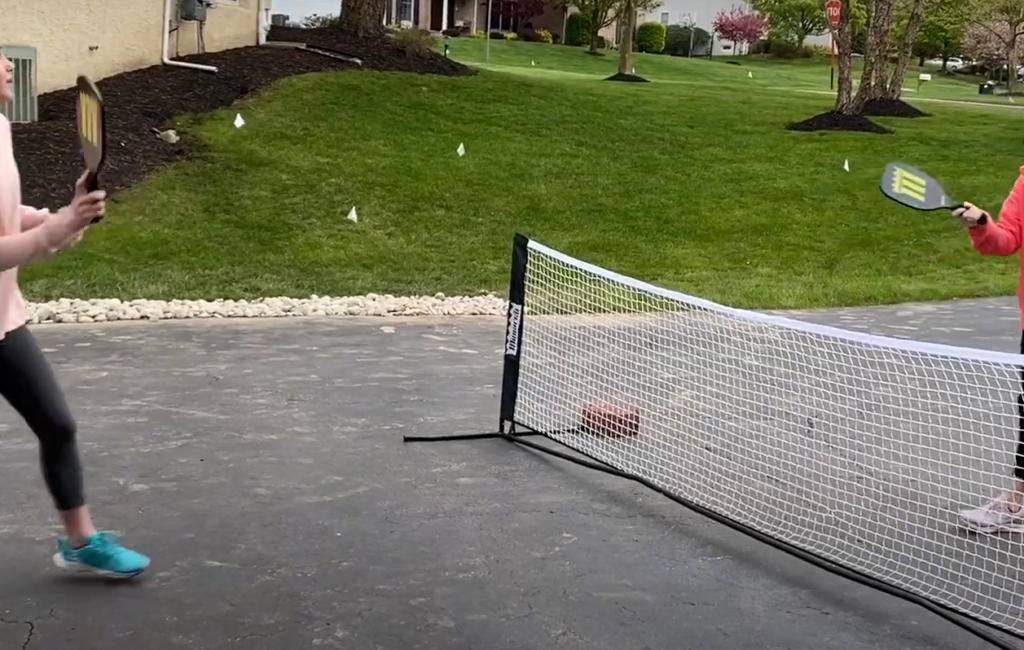
Raw concrete surfaces are typically rough and abrasive, which can cause serious injuries to players who may fall or slide on the court. The surface also tends to be unforgiving, making it difficult for players to move quickly and change direction with ease. This can result in strain on the joints and an increased risk of injury.
In addition, raw concrete surfaces are not ideal for pickleballs due to their lack of shock absorption. Pickleball involves a lot of movement and jumping, which can put a strain on the body if played on a hard surface like raw concrete. This can lead to fatigue, discomfort, and potentially even long-term joint problems for players.
Laying Concrete in Pickleball Courts: What You Need to Know
While raw concrete may not be suitable for playing pickleball, there are ways to make it a viable surface for the sport. This can also help with shock absorption and reduce the risk of injuries.
Another option is to add a rubberized coating on top of the concrete, which can provide better traction and reduce the risk of slips and falls. This type of surface is also more forgiving on players’ joints.
However, it’s important to note that even with these modifications, raw concrete is still not an ideal surface for pickleball courts. It may be suitable for recreational play or temporary use, but for serious players or those looking to host tournaments, it’s recommended to invest in a proper pickleball court surface.
Covering Concrete in Pickleball Courts: Alternatives to Consider
If you’re looking to build a pickleball court from scratch, several other options besides raw concrete may be more suitable. These include:
- Asphalt: This is a popular choice for pickleball courts due to its durability and cost-effectiveness. It also provides good traction and shock absorption for players.
- Artificial turf: While it may not be the most traditional option, artificial turf can provide a great surface for pickleball. It offers good shock absorption and is easy on players’ joints.
- Interlocking tiles: These are specially designed tiles that can be easily installed over any flat surface, including concrete. They offer excellent traction and shock absorption, making them a popular choice among pickleball players.
Ultimately, the best surface for a pickleball court will depend on factors such as budget, location, and personal preference. However, when considering concrete as an option, it’s important to understand the potential drawbacks and consider other alternatives that may provide a better playing experience for all involved. With the right surface in place, you can enjoy hours of fun and competitive play on the pickleball court!
Why is Concrete Better than Asphalt for Playing Pickleball?
While both concrete and asphalt can be suitable options for pickleball courts, there are some key differences to consider when deciding between the two. Here are a few reasons why concrete may be a better choice for playing pickleball:
- Durability: Concrete is known for its durability and ability to withstand heavy use over time. This makes it a great option for high-traffic areas such as pickleball courts.
- Cost-effectiveness: While both concrete and asphalt are relatively affordable options, concrete may require less maintenance over time. This can result in cost savings in the long run.
- Customization: Concrete offers more customization options, as it can be painted or stained in a variety of colors to suit your preferences. This can make for a more visually appealing court for players and spectators alike.
- Surface consistency: Unlike asphalt, concrete offers a more consistent surface that is not affected by changes in temperature or weather conditions. This can provide a more reliable playing experience for pickleball enthusiasts.
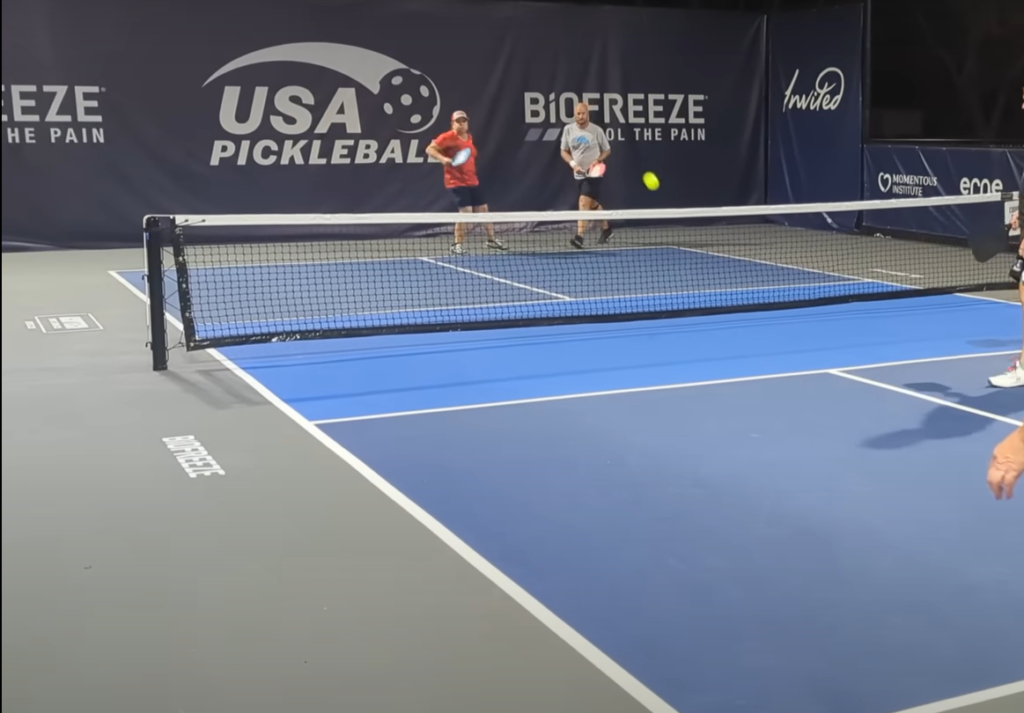
While both surfaces have their pros and cons, it’s ultimately up to personal preference when deciding between concrete and asphalt for your pickleball court. Whichever option you choose, make sure to properly maintain and resurface the surface regularly to ensure a safe and enjoyable playing experience for all [2].
Pros and cons of playing pickleball on concrete
Pickleball is a popular sport that has been gaining more and more attention in recent years. This fast-paced game is a combination of tennis, badminton, and ping pong, and it can be played both indoors and outdoors on different surfaces.
One of the most common surfaces for pickleball is concrete. While playing on this surface has its advantages, there are also some drawbacks that players should consider. Here are the pros and cons of playing pickleball on concrete:
Pros:
- Durability: Concrete is a very durable surface, making it suitable for heavy use. This means that pickleball courts made of concrete can withstand frequent games without showing signs of wear and tear.
- Low maintenance: Concrete is relatively low maintenance compared to other surfaces. It does not require regular resurfacing or special cleaning products, making it a cost-effective option for pickleball courts.
- Consistency: Concrete provides a consistent playing surface, which is important in a game like pickleball that requires precise shots and movements. With concrete, players can expect the ball to bounce consistently and accurately.
- Easy to install: Compared to other surfaces, concrete is relatively easy to install. It can be poured in place or precast, and it does not require extensive preparation or specialized equipment.
- Affordability: Concrete pickleball courts are more affordable than other surfaces such as asphalt or clay. This makes them a popular choice for communities and schools looking to build new courts.
Cons:
- Hard surface: One of the main drawbacks of playing pickleball on concrete is the hard surface. The repetitive movements and impacts from running and jumping can take a toll on players’ joints, especially for older or more experienced players.
- Slippery when wet: Concrete can become very slippery when wet, which can be dangerous for players. This is particularly concerning during rain or in areas with high humidity.
- Limited shock absorption: Unlike other surfaces, such as clay or rubber, concrete does not offer much shock absorption. This can lead to increased fatigue and strain on players’ bodies, especially during longer games.
- Noisy: Concrete can be a noisy surface for pickleball. The sound of the ball bouncing off the hard surface can be distracting for some players and may affect their focus.
- Not ideal for beginners: The fast-paced nature of pickleball on concrete can be challenging for beginners, who may struggle with controlling the ball and movements on this surface. This can make it discouraging for new players to continue playing.
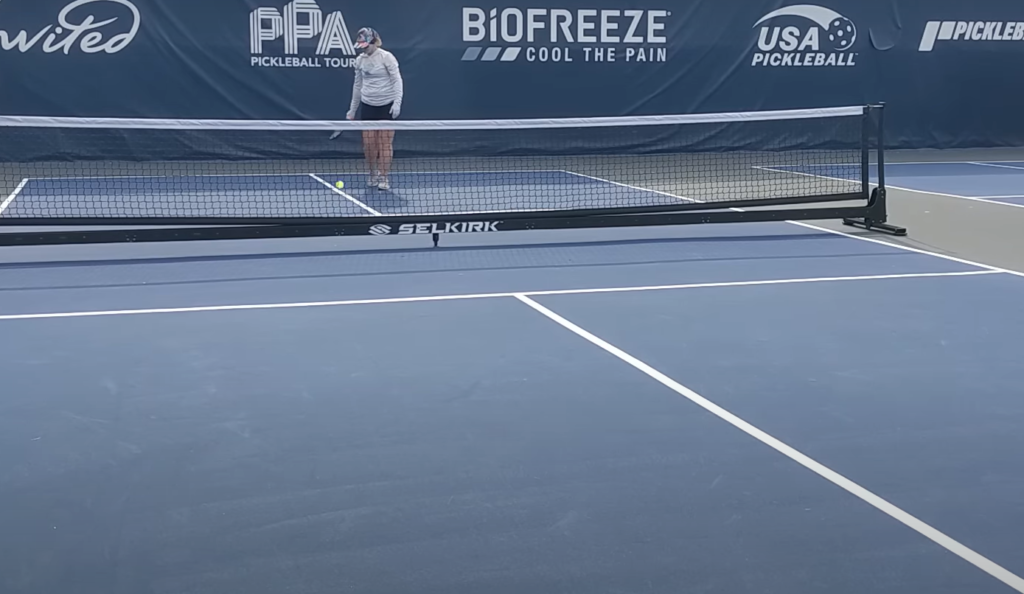
In conclusion, playing pickleball on concrete has its benefits and drawbacks. It is a durable, low maintenance, and affordable option, but it can also be hard on players’ joints, slippery when wet, and noisy. Ultimately, the choice of surface will depend on personal preferences and considerations such as age, skill level, and budget.
Safety concerns when playing on concrete pickleball courts
Playing pickleball on a concrete court can be an enjoyable and challenging experience, but it is important to take certain safety precautions. Concrete surfaces have different characteristics compared to other types of courts, such as asphalt or synthetic turf. Here are some safety concerns you should keep in mind when playing on concrete pickleball courts:
Slips and Falls
Concrete can become slippery when wet, especially if there is debris or dust on the surface. This can increase the risk of slips and falls, which can lead to injuries such as sprains, bruises, or even fractures. To prevent slipping on a concrete court, always make sure to wear proper non-slip shoes and regularly clean the court before playing.
Impact Injuries
Concrete is a hard surface, and any falls or collisions can result in impact injuries. This includes bruises, scrapes, and more serious injuries like concussions or broken bones. To minimize the risk of impact injuries on a concrete court, consider adding some rubber or foam padding around the edges of the court and wearing protective gear.
Heat and Sun Exposure
Concrete courts can absorb and radiate heat, making them uncomfortable to play on during hot weather. This can also increase the risk of dehydration, heat exhaustion, or even heatstroke. To protect yourself from the sun and heat when playing on a concrete court, wear sunscreen, and a hat, and stay hydrated by drinking plenty of water.
Excessive Joint Impact
The hard surface of a concrete court can also put strain on your joints, especially during high-intensity play. This can lead to joint pain and discomfort, particularly in the knees and ankles.
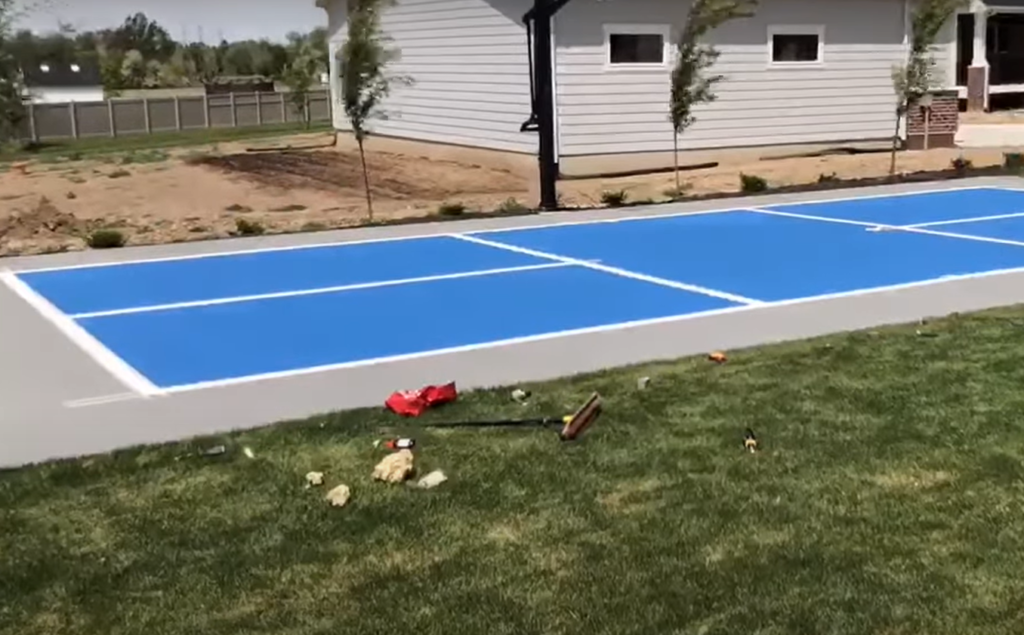
To reduce the impact on your joints when playing on a concrete court, make sure to warm up properly before playing and consider using cushioned insoles in your shoes.
Equipment Damage
Concrete is a rough surface, and it can cause damage to your pickleball equipment over time. The constant scraping, sliding, and bouncing of the ball on the concrete can wear down the paddles, causing chips or cracks. To protect your equipment, consider using protective tape on the edges of your paddle and regularly inspecting it for any signs of damage.
Overall, it is essential to always prioritize safety when playing on a concrete pickleball court. By being aware of these potential hazards and taking necessary precautions, you can ensure an enjoyable and injury-free playing experience.
FAQ
What is the best surface for indoor pickleball?
Indoor pickleball is a popular sport played on a court with dimensions similar to that of a badminton court. The surface of the court can greatly impact the gameplay and overall experience for players. Here are some commonly used surfaces for indoor pickleball:
- Hardwood: Hardwood courts are one of the most preferred surfaces for indoor pickleball. They provide good traction and allow for quick movements on the court. However, they can be quite expensive to install and maintain.
- Taraflex: Taraflex is a type of vinyl flooring commonly used for indoor sports such as pickleball. It is durable, low-maintenance, and provides good shock absorption. However, some players may find the surface too slippery.
- Rubber: Rubber flooring is another popular choice for indoor pickleball courts. It offers good traction, shock absorption, and is relatively affordable compared to other options. However, it may not be as durable as hardwood or Taraflex.
- Carpet: Carpeted surfaces are also used for indoor pickleball courts, especially in recreational centers. They offer good traction and shock absorption, but may not be ideal for competitive play as the surface can become uneven over time.
- Cushioned surfaces: Some indoor pickleball courts use cushioned surfaces made of materials such as rubber or foam. These surfaces provide excellent shock absorption and are easy on the joints. However, they may also cause players to lose traction and affect their movements.
Ultimately, the best surface for indoor pickleball will depend on personal preference and the level of play. It is recommended to try out different surfaces and see which one suits your playing style best. Some facilities may also offer a combination of surfaces, such as hardwood with carpet or rubber padding, to cater to different player needs.
How does court surface influence pickleball play?
The court surface can greatly influence the gameplay and overall experience of indoor pickleball. Here are some ways in which the surface can affect the game:
- Traction: The level of traction provided by the court surface can impact player movements and their ability to change directions quickly. A surface that is too slippery may cause players to lose balance, while a surface with too much friction may impede their movements.
- Shock absorption: The court surface can also affect the amount of shock absorbed by players’ joints and muscles. Surfaces with good shock absorption are important for player safety and reducing the risk of injuries.
- Speed of play: Different surfaces have varying levels of speed, meaning how fast or slow the ball bounces off them. This can affect the pace of the game and players’ reactions to the ball.
- Consistency: The surface should be consistent throughout the entire court to ensure fair play. Uneven or damaged surfaces can cause unexpected bounces and disrupt the flow of the game.
Ultimately, a good court surface for indoor pickleball should provide a balance between traction, shock absorption, and consistency.
What are indoor pickleball courts made of?
Indoor pickleball courts are typically made of a combination of materials to provide the best playing experience. Here are some commonly used materials for building indoor pickleball courts:
- Subflooring: The subfloor is the base layer of the court, typically made of concrete or other sturdy materials, providing stability and support for the upper layers.
- Flooring: The top layer of the court is usually hardwood, Taraflex, rubber, carpet, or a combination, directly impacting player movements and play speed.
- Lines and markings: High-quality acrylic paint is used to paint the court’s boundaries, kitchen line, and service boxes, ensuring durability and visibility.
- Padding: Some indoor pickleball courts have padding on walls or other areas to protect players, and reduce noise levels.
Overall, the materials used for indoor pickleball courts should be durable, provide good traction and shock absorption, and allow for consistent play. So if you are planning to build an indoor pickleball court, make sure to choose the right materials for a great playing experience.
Useful Video: Backyard Pickleball/Basketball Court
Conclusion Paragraph
Overall, the courts and their quality are the important success factors of playing pickleball. The concrete courts ensure that the ball bounces consistently and accurately, allowing for fair gameplay. This type of court surface also minimizes the risk of injury, as players are less likely to slip or trip. Moreover, the quality of the courts directly impacts the overall experience for players and spectators alike.
References:
- https://www.paddletek.com/blogs/news/pickleball-courts-101
- https://www.paddle2racket.com/post/can-pickleball-be-played-on-concrete





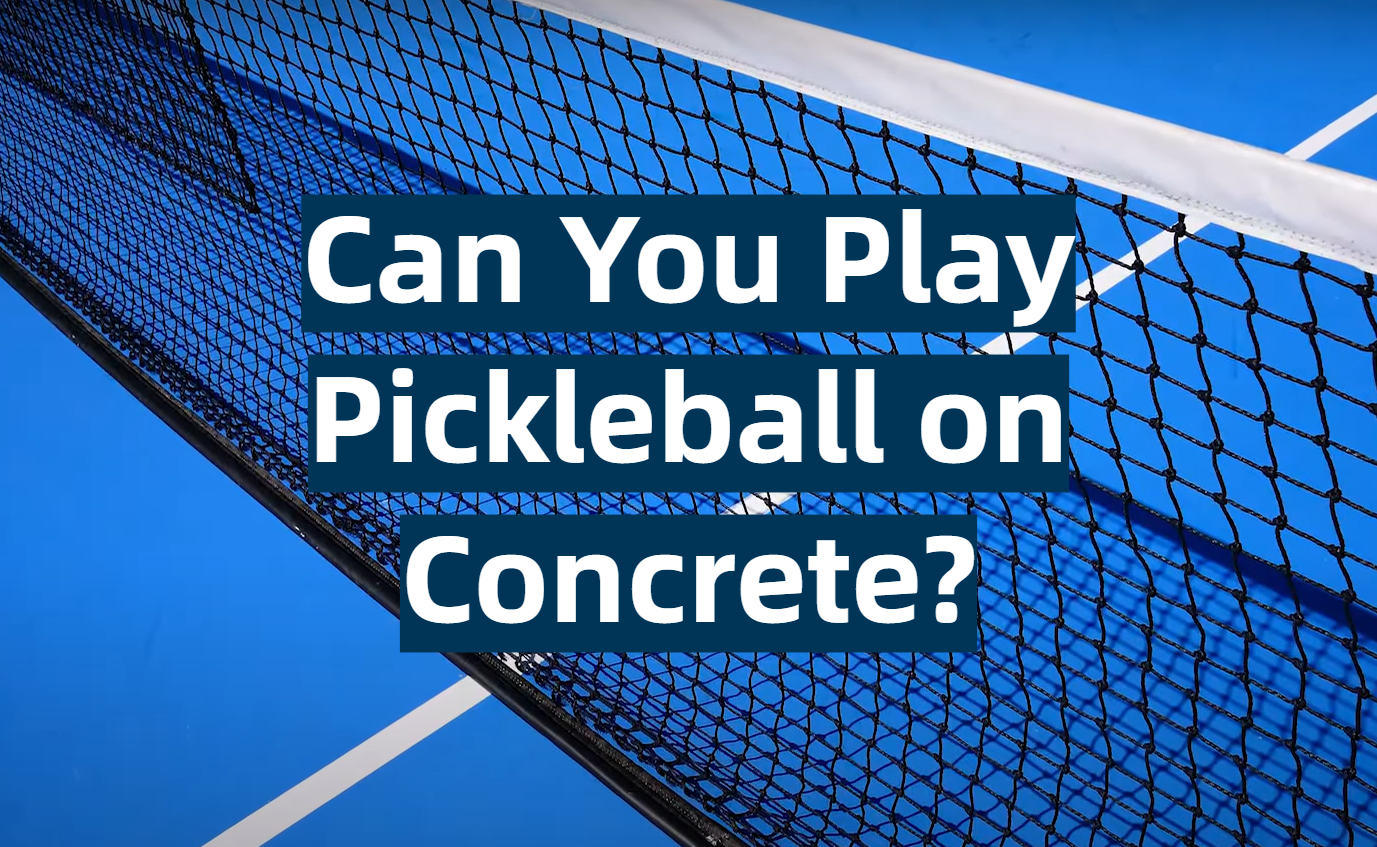
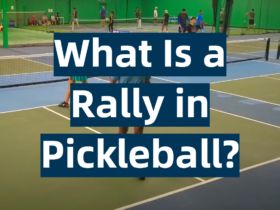
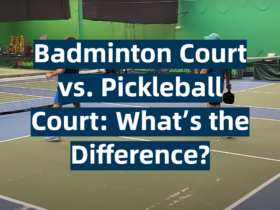
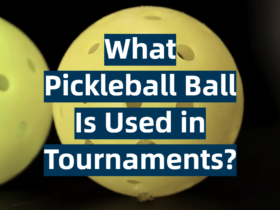
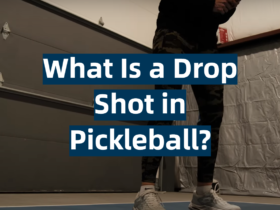
Leave a Review